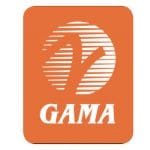Is the aviation maintenance industry back in business?
An interview with Bird Aviation’s Chief Executive Frederik Pralus
Do you think the MRO industry has fully recovered from the pandemic years?
The MRO industry has made significant strides towards recovery from the pandemic years, but the resumption of normalcy may vary depending on the specific sector of the MRO and the geographic location. Nevertheless, this recovery has been marked by numerous changes and several reassessments and a re-evaluation of our approach to business practices.
How do you think airframe MRO companies have managed this recovery?
When you experience a crisis of this magnitude, there is no miracle recipe. What is extraordinary, is the strength of character demonstrated by the industry to rebound and recover. Airframe MRO companies have started the recovery through various strategies.
For many, the first reflex when coming out of such a difficult period is to concentrate on your core business; to monitor and optimise your costs.
All key players have done their part by adapting to the constraints and the difficulties of one another. Operators have accepted longer lead times for maintenance because of reduced manpower availability and procurement issues. Staff have made productivity efforts, have accepted some unemployment periods, and have taken benefits of these intervals to get trained.
Some MROs have also followed the path of digital transformation, the diversification of services, and the implementation of Lean Management to improve operational efficiency. Many have also enhanced their supply chain resilience and explored new revenue streams to mitigate the impact of the downturn.
And, like every time after a recession, new actors have entered the stage, thus proving that the MRO business can be attractive and profitable.
What were the main issues and challenges faced during this cycle and how have MROs sought to address them? Are any issues still present and can we expect some new challenges to come?
During the recovery cycle, MRO companies faced challenges such as reduced demand, supply chain disruptions, workforce constraints and financial limitations. Even the nature of the work has changed as many aircraft have to be removed from storage and returned to service.
To address these challenges, MROs implemented measures such as workforce restructuring, renegotiating contracts, adopting advanced technologies for remote maintenance and monitoring, and enhancing collaboration with OEMs and operators. While some challenges may persist, such as ongoing supply chain issues and changing regulatory requirements, MROs continue to adapt to these circumstances.
Moreover, as the industry evolves, new challenges may arise, such as the need to address sustainability concerns and adapt to changes in consumer preferences and market dynamics.
Sustainability has become increasingly important in recent years, with stakeholders placing greater emphasis on reducing carbon emissions and environmental impact. MRO companies must therefore prioritise sustainability initiatives, such as investing in eco-friendly technologies, implementing energy-efficient practices, and adopting circular economy principles to minimise waste and resource consumption.
Furthermore, the ongoing digital transformation of the aviation industry presents both opportunities and challenges for MRO companies. While digital technologies offer significant benefits, such as improved operational efficiency, predictive maintenance capabilities, and enhanced customer experiences, they also introduce new complexities, such as cyber-security risks and the need for upskilling and reskilling the workforce.
Therefore, MRO companies must invest in cyber-security measures, training programmes, and organisational changes to fully leverage the potential of digitalisation while mitigating associated risks.
Have there been any notable innovations or technological advancements in MRO practices to complete this retrieval?
Notable innovations and technological advancements in MRO practices have emerged to support the recovery process. These include the adoption of predictive maintenance analytics, utilisation of augmented reality for remote assistance, implementation of blockchain technology for supply chain management, and the use of unmanned aerial vehicles (UAVs) for inspections in challenging environments. For example, at Bird Aviation we have implemented artificial intelligence (AI) tools to facilitate navigation in our records and manuals, to access key performance indicators live.
What role have aviation industry actors played in this upswing?
Aviation industry actors, including airlines, lessors, OEMs, regulators, and industry associations, have played a crucial role in supporting the upswing of the MRO sector.
Collaborative efforts, such as sharing best practices, providing financial support, and facilitating regulatory flexibility, have helped expedite the recovery process.
But paradoxically, this interdependence relationship also constitutes one of the main points of friction in this process as all the players have not yet fully recovered and have different timelines not necessarily in line with the end-users expectations.
Looking forward, what are the key factors to continuous market progression and MRO business sustainability?
Key factors for continuous market progression and sustainability in the MRO business include a real analysis of the market and its evolution over the next 15 years and especially in the training needs of qualified labour.
Many MROs like Bird Aviation have understood the challenge and invest in training schools, aviation maintenance academies to build a future skilled workforce.
MROs will also need to continue investing in technology and innovation, enhancing capabilities, fostering collaboration across the industry ecosystem, maintaining a strong focus on safety and compliance, and staying agile to adapt to evolving market dynamics and customer needs.
Are there risks of a return of a major crisis in the MRO industry?
We wish we could say that the cycle is broken, but there are always risks of unforeseen crises impacting the MRO industry.
Proactive risk management strategies, robust contingency planning, and continued industry collaboration can help mitigate these risks. Factors such as geopolitical instability, economic downturns, shifts in regulatory frameworks, and technological disruptions could potentially pose challenges to the MRO sector in the future, but preparedness and resilience can help mitigate their impact.
While the MRO industry has made remarkable steps towards full recovery from the pandemic, it must remain vigilant and adaptable in the face of ongoing and emerging challenges.
By prioritising innovation, sustainability, collaboration, and risk management, MRO companies can ensure continued market progression and long-term business sustainability.




